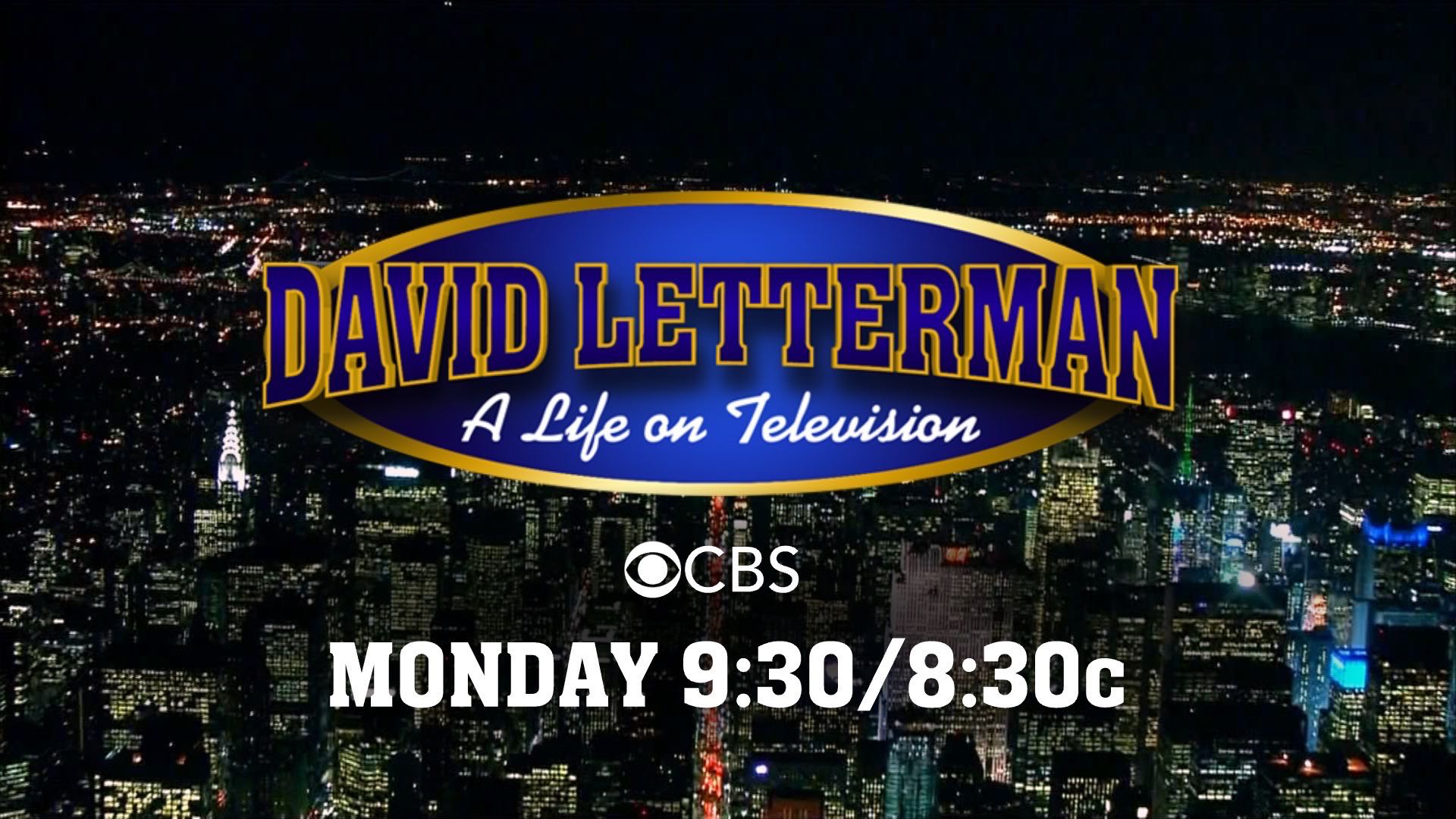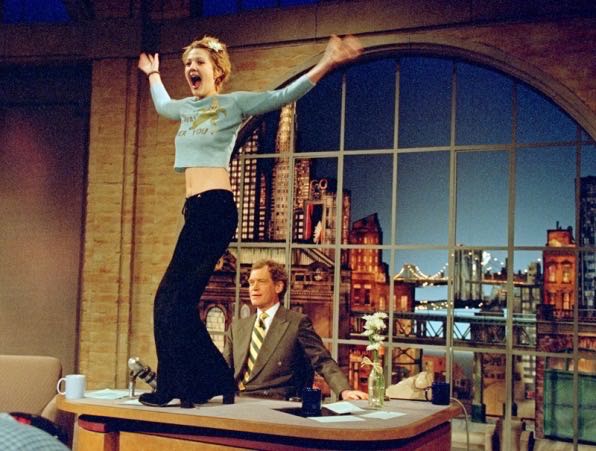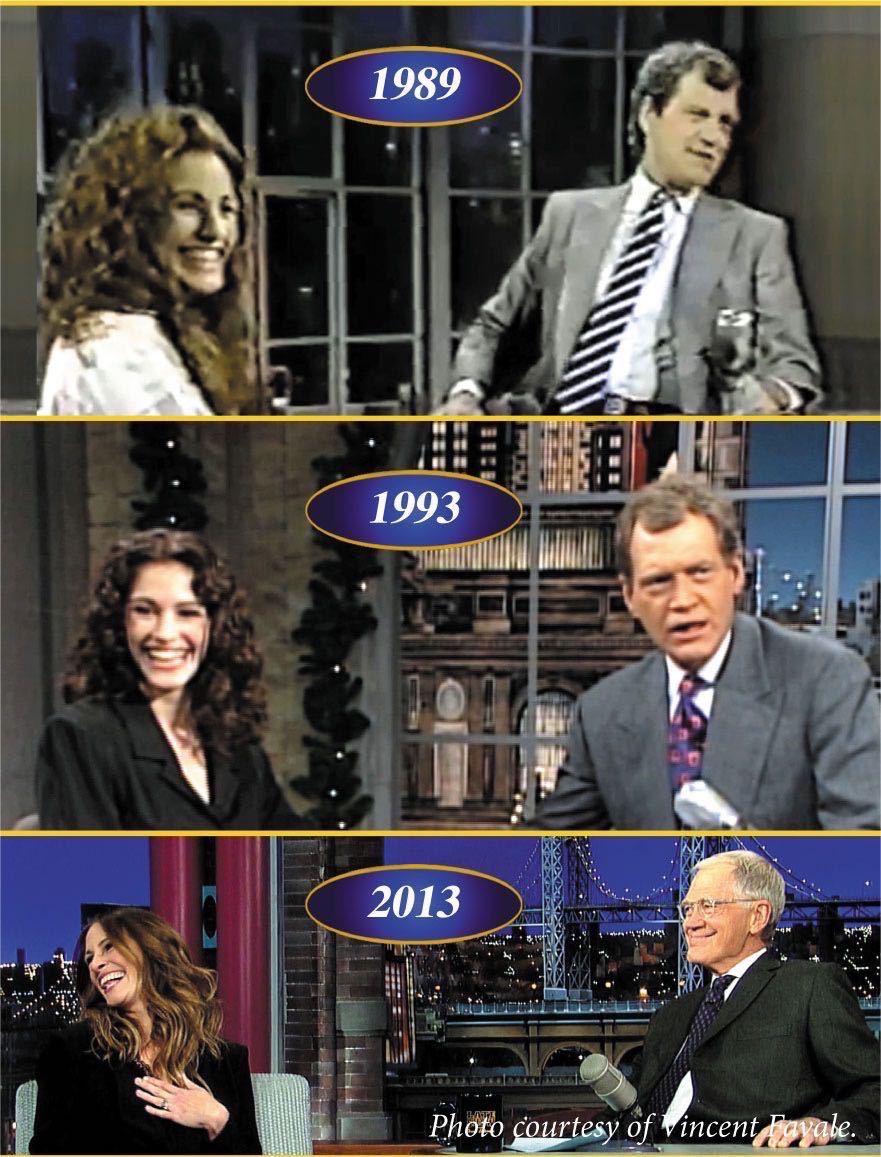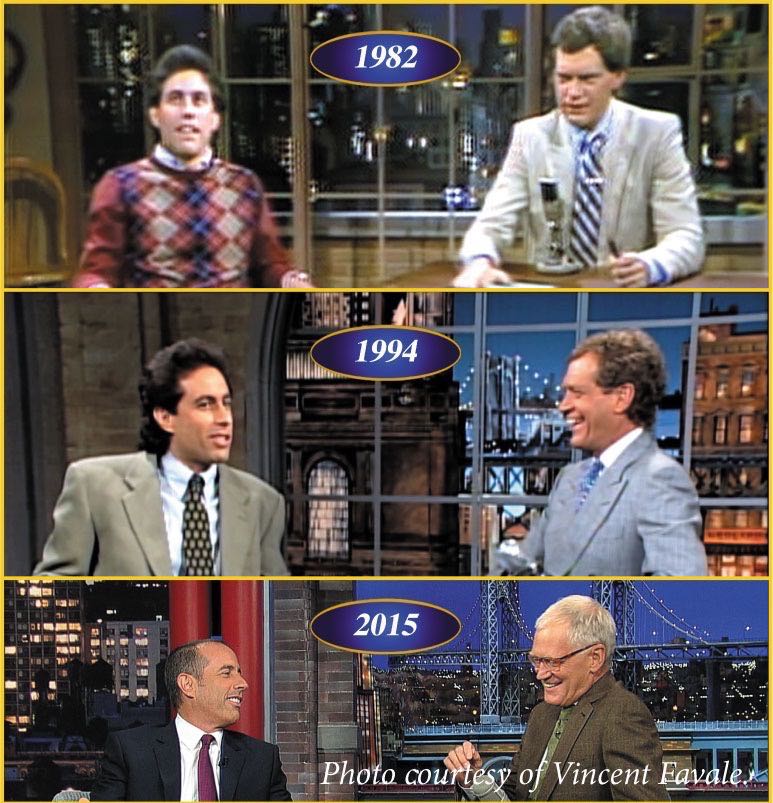
At 9:30 PM on May 4, with three weeks to go, CBS aired David Letterman: A Life on Television. It was a prime time compilation special that covered Dave’s career on both NBC and CBS. It began with a music video compiling the classic moments from over thirty years of Letterman’s television career set to the R.E.M. classic “It’s the End of the World as We Know It (and I Feel Fine).”

Photo courtesy of Vinnie Favale.
Vincent Favale (CBS Executive of Late Night Programing): I produced the prime time special much against everyone’s wishes. I knew I wanted to start with a bang. R.E.M. made their debut on Late Night with David Letterman in 1983. I wanted a montage of every great, iconic moment of when Dave did something big and stupid—jumping on the Velcro board, snowboarding on 53rd Street, all that stuff. It wasn’t chronological. It was any visual thing that he did that was larger than life.
The host of the special was Ray Romano. He was the perfect host, as viewers knew how important Letterman was to Romano’s career. Worldwide Pants produced Everybody Loves Raymond.
Vincent Favale: We needed someone to guide us through it. We couldn’t shoot on the Late Show set. It was a really sensitive time. So we re-created Dave’s desk as a backstage set and we filmed it all in California. Having Ray was a big part of it, because it gave us credibility. Ray is the guy.
Rick Scheckman: When Vinnie got the OK from Worldwide Pants, they put that special together in like a week and a half. I think it was a very good overview of Dave’s career. Vinnie flew out to California to film Ray. It was well done. They didn’t have a lot of time to put it together.

Photo courtesy of @letterman, CBS publicity photo.
The special highlighted guest moments (Drew Barrymore, Madonna, Joaquin Phoenix), Dave flirting with actresses (Dave kissing Gillian Anderson—it made me jealous, in 2002 as well as today), montages of Top Ten Lists, and serious moments through the years (September 11, Dave’s heart surgery). Some of these clips were also shown on the late-night show during the final six weeks. This double dipping became a point of contention between the network and the Late Show staff.
Barbara Gaines: They wanted to do their own special. They wanted to use the same clips and they were going first, so I felt in competition with my own show against my own show. It was stressing me out to no end.
Vincent Favale: Barbara Gaines, and I say this lovingly, and I butted heads because they didn’t want to do a prime time special, because they wanted to save these look-back moments as packages within the context of their final shows. I was like, “There is room for both. These clips are iconic. We can put it in prime time, where there are more people watching, and grab America by the throat and remind them that this guy is leaving after thirty some-odd years.” I just couldn’t get anyone to agree to that notion.
Barbara Gaines: I need that kind of added stress for them to put on their show? I needed support for us. I feel that we would do it or don’t do it at all.
Vincent Favale: I partnered up with the CBS news organization because they are used to getting things done quickly. I had to call my boss for help, for her to call the head of NBC to say, “Trust us.”
Randi Grossack: That was all CBS News. I would have been happy to have been involved, because I had all these reels and could have helped them with some of it. I thought for people who weren’t involved with the show, they did a nice job. We would have done it differently, but it was a nice thing from CBS. For something done that quickly, they deserve credit for it.
Kathy Mavrikakis: If you were to see the documents that I had to create for any time we had to do a clip package. I did the document for the CBS prime time show, basically tracking every single clip and who needed to be paid for it and what date it originally aired. Every single person in all of those clips gets paid. All the writing teams from all those clips have to get paid again. If there are different directors on different segments, they get paid again.

Vincent Favale: I wanted Dave jumping in the cereal bowl. I wanted Cher calling Dave an asshole. I wanted all those moments. Barbara wanted them too. I was like, “Whatever you don’t use, I’ll use.” To me it didn’t make a difference if we both used the same clip. When you are winding down, you can watch these classic clips a million times. Emotions were running high, and I was sensitive to what they were up against. For me, life was going on, but for Barbara she was out of there.
Barbara Gaines: I wanted our show to be special and unique. I didn’t want it to be, “I just saw this clip last Monday at an earlier hour.” Everything is all on the internet anyway. It felt too saturated. They felt that they were promoting the 11:30 show.
Vincent Favale: I was saying, “I’ll trade you an Andy Kaufman clip for a Cher clip.” It was really intense, but I wanted to honor Dave and the people that worked for them. It was their hard work, too. I wanted more people to watch it than were watching the nightly broadcasts. The prime-time special ended up doing a large number [8.14 million according to tvbythenumbers.com]. It helped the 11:30 show, because people realized he was leaving.
Barbara Gaines: I thought the show was OK. I didn’t feel we needed it. It didn’t add to my enjoyment of the last weeks.

Vincent Favale: I ended the special with David Bowie’s song “Changes,” about how Dave had changed over the years—not just physically, but with his child being born. I wanted to celebrate Dave’s three-decade relationship with Howard Stern, Tom Hanks, Jerry Seinfeld, Julia Roberts, and Bill Murray. Ultimately, I think Dave liked it.
Later on that evening . . .